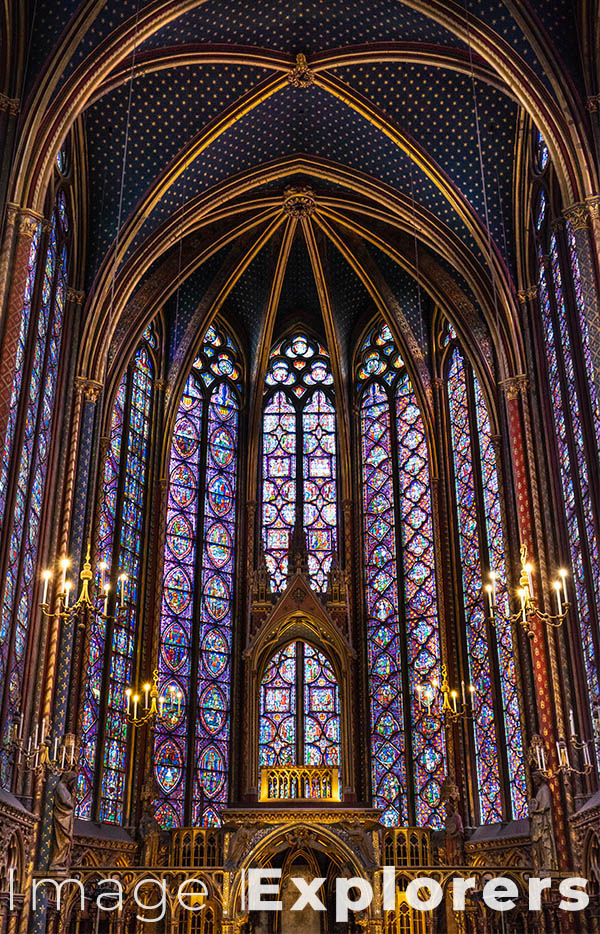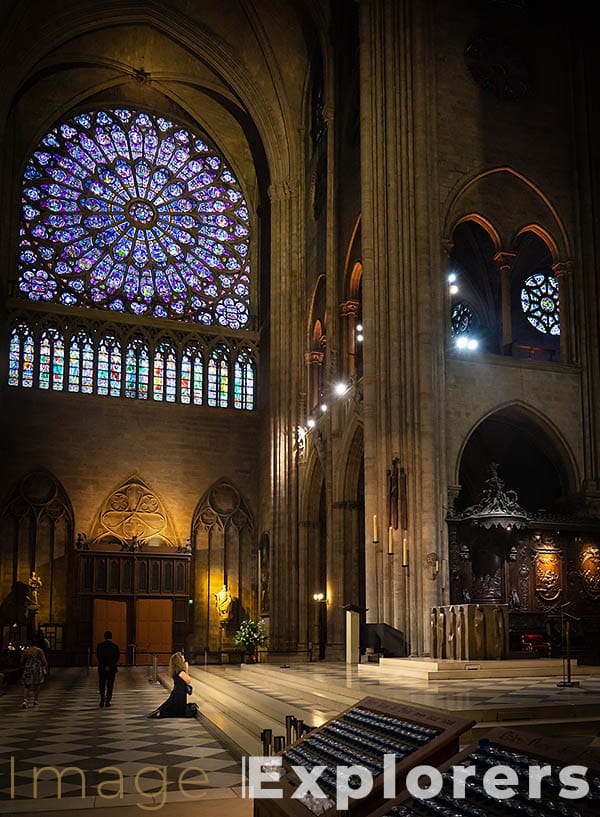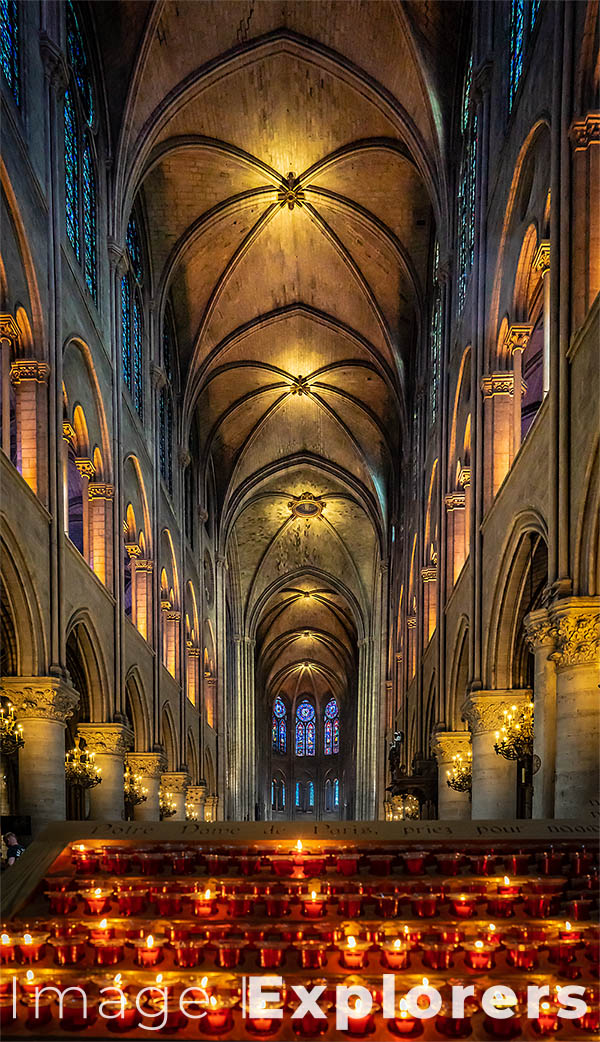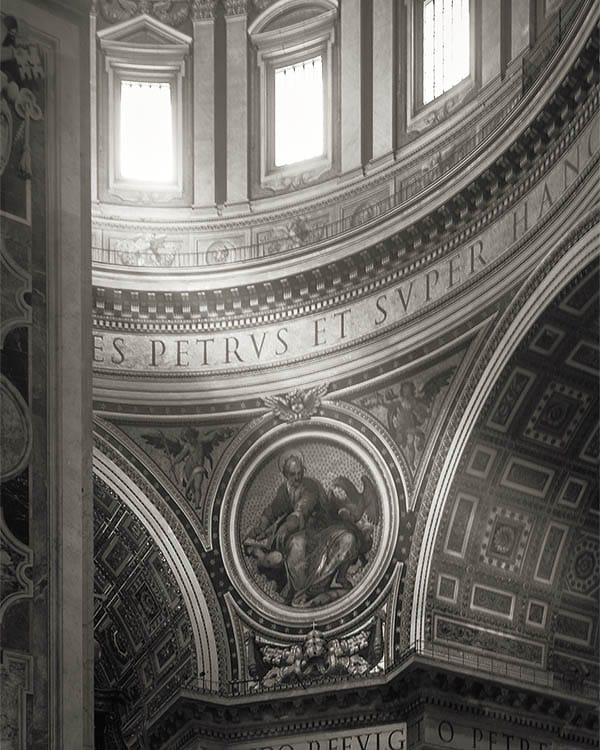30 Oct Beautiful Low-Light Photography in Churches & Cathedrals in 5 Easy Techniques
How do you get Beautiful Low-Light Photography in Churches & Cathedrals?
Churches and cathedrals provide some truly extraordinary lighting. The glow from the altar candles, the multi-coloured light reflections onto stone textures from stained-glass windows or even the delicate light rays visible through the darkness and dust make low-light photography in churches and cathedrals an absolute joy. In addition to this, there is often the opportunity for some stunning symmetry in your images. We found the Eiffel Tower in Paris was incredible for creating symmetry.
Unfortunately, the ecstasy of these images comes with photography agony. Let us show you how to overcome the problems and create some truly awesome low-light photographs.

Fantastic symmetry and lighting – here at St Chappelle in Paris
Getting Your Exposure Right
Obviously, the issue in many churches is the contrast of the darker areas with the bright lights which could be candles, stained-glass windows or tiny clear windows that let in a beam of light. If you expose for the church you will find your candles / windows will be totally over-exposed but if you expose for the candles, you’ll have no detail in the shadows. What we tend to do is to expose for the main church shadow areas, and then stop down 2-3 stops to prevent the highlight subjects overexposing. It’s a good idea to do a few test images, bracketing at 1-stop intervals. With bracketing, you can also mix 2 or more images together in post-processing to get the details from both the shadows and highlights. This process is a form of HDR.
When you see your images in the back of the camera, or once they’ve been downloaded, don’t panic if they look a little bit on the dark side. You can always bring back details from the shadows easier than you can rescue burnt out highlights.
Pro-tip:
When lightening (dodging) areas in Camera Raw, remember that you will be increasing the grain in the shadow area. Also, the shadow areas have less saturation than the middle tones. To compensate for this you can reduce the grain and increase the saturation with the same adjustment brush that you are using to lighten the darker areas.
Light rays make stunning images – St Peter’s Basilica, Vatican City, Rome
Using Slow Shutter Speeds without a Tripod
If you can use a tripod in a church, by all means do so. However, a lot of the large cathedrals have a ban on tripods and flashes but are happy with other photography. There are a few ways around this. Using a small bean bag, you can steady your camera on the top of pews or any other flat surface for longer exposures. We often push our camera hard against a wall or a pillar to hold it steady for multiple-second exposures.
There are a few mini-tripods that are very sturdy available on the market and most church-photography-police don’t see these as an issue if they even realise what they are at all.
Look for the Spiritual Element
Churches can be beautiful empty places, but sometimes you want to get more of the spiritual feeling of the place. Look for elements that can enhance this feeling like beams of light streaming through upper windows in the darkness (light of Heaven lighting the dark paths!) Sometimes you’ll find worshippers in contemplation – if you are able to photograph them in a respectful way, retaining their anonymity – these can make for beautiful images.

Whilst being sensitive, worshippers can add the spiritual element to your image – Notre Dame, Paris
What to do About Tourists
Tourists can be an annoying bunch … ourselves excluded of course! One of the methods we use, especially in churches, is to have them moving through the long exposures. This augments the feeling the ethereal or spiritual and can look quite interesting. The other method is to take several images and put them together in post-processing to remove the people. (See our Vatican stairs tutorial).
Fixing Weird Perspectives
Try to bear in mind when you are taking the photograph with a wide-angle lens that your perspectives are going to be quite extreme and if you can keep your camera as parallel to the ground as possible, then the wild perspectives will not be quite as bad. You will of course have lots of foreground in your image but this can be cropped off in post. Of course you can always sort out your perspectives in Camera Raw using the perspective correction tools.

Watch out for your perspectives – these can add to an image, or you can adjust in Adobe Camera Raw – Notre Dame, Paris
So, there you have it, five easy techniques to improve your low-light photography. The next time you have access to a church or cathedral, go in and practice so when the building is truly awesome you will be prepared to create incredible imagery.



No Comments